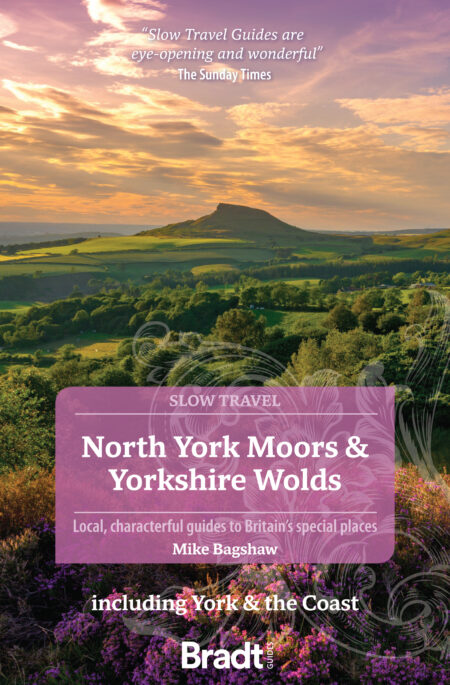When marauding Vikings approached what is now the North York coast over a thousand years ago, the view that greeted them — the bulge of the moors meeting the sea in a line of dark crags — prompted them to name this part of England the Land of Cliffs, or Cleveland, now known today as Yorkshire and Cleveland’s Heritage Coast.
Here, evidence of Yorkshire’s rich history can be found under every rock and up every village alleyway, making it the perfect backdrop for a road trip. This simple route starts at Staithes and heads south, closely following the coast. With only about an hour of driving, it gives you ample time to explore all of this charming stretch of historic coastline has to offer in just a day.
Staithes
Starting from Staithes, you’ll be greeted by multicoloured fishing cobbles bobbing at their moorings behind the harbour’s stone piers, and a mass of orange pantiled houses, jostling shoulders for space between the cliffs and the water, exactly the sort of pleasant scenery you’d expect from such a coastal setting.
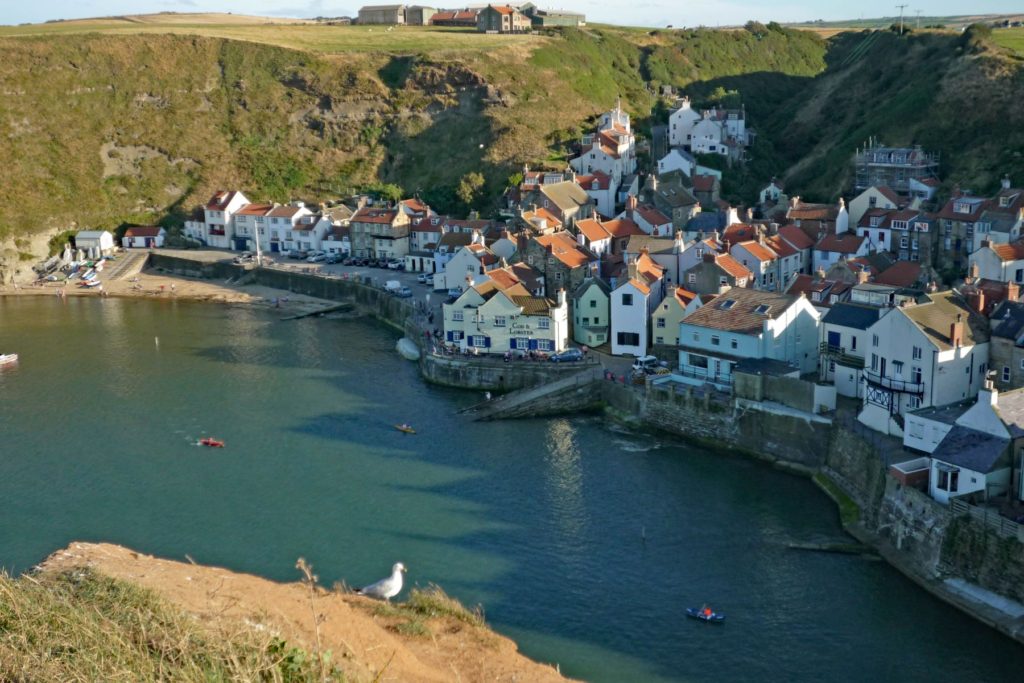
Staithes’ most famous son is undoubtedly James Cook who, after a childhood just inland, probably had his first smell of the sea when he worked as a teenage shop assistant in the village. Just a few yards from Captain Cook’s cottage is the labelled entrance into Dog Loup; quite probably the narrowest named thoroughfare in the country, and a good start to a wander around the back alleys, squares and streets.
On your exploration look out for the nautical themes in house names, including imaginative ceramic plaques, and the fascinating Staithes Story Museum on the High Street. Try crossing the bridge to climb Cowbar Bank for the best bird’s-eye view of Staithes to one side, and the mighty Boulby Cliff, the highest on England’s east coast, on the other.
Runswick Bay
Runswick Bay possesses two particularly appealing features, a huddle of pantile-roofed cottages that comprises the village, and the beach, which is much more attractive than that of its larger near neighbour, Robin’s Hood Bay. On a normal summer’s day, the beach is usually populated by ice creams, buckets and spades, multicoloured windbreaks and sunbathers, but venture a frisbee-throw away from the car park and slipways and it shows a much wilder side to its nature.
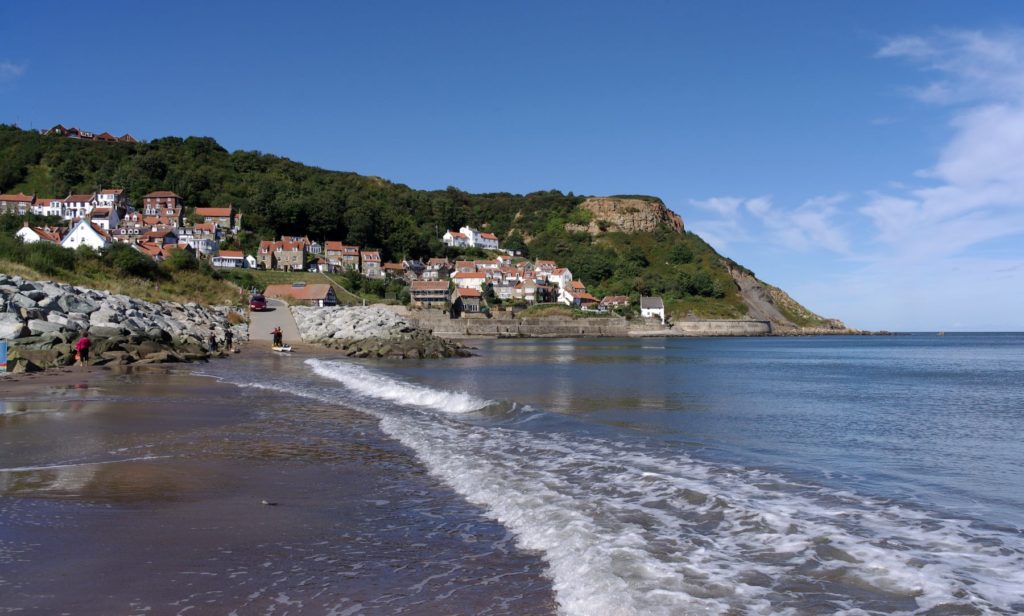
Among the beach pebbles, hundreds of ammonites, a type of fossil, lie waiting to be found for the perfect do-it-yourself souvenir. Half the fun is in the searching and children can be occupied for hours; take along an old dinner knife to split the soft rock as well as some paper and wax crayons to make rubbings of the fossils embedded in bigger rocks.
When you’re ready to move along and take your new treasures with you, take Cleveland Way through Kettleness to keep the coast in sight.
Sandsend
This village is certainly aptly named: two miles of golden beach stops abruptly at the foot of The Ness and this cluster of sandstone cottages, hotels and shops huddle in what little shelter it provides.
At the cliff end, most of Sandsend proper hides up the little valley of Sandsend Beck, with a sleepy hobbit village air to it. Even at the height of summer when the beach is typically crowded, all stays serene and peaceful up here, with little to disturb the grazing goats.
If you need to stretch your legs, a good spot is the Sandsend Trail, which heads along the cliff edge to what locals call ‘The Moon’ and gives grandstand views of wheeling fulmars and the famed reef break below. It weaves its way between vast quarried holes and artificial hills called ‘clamps’ – remnants of 300 years of the aluminum industry.
Whitby
Whitby is dripping in history; it oozes from the pores of every building like a little York-by-the-sea with Tudor halls, Gothic ruins, Saxon churches, smugglers’ pubs and fishermen’s cottages. And then, cheek by jowl, you will find the other, more modern Whitby of buckets and spades, amusement arcades and fish and chip shops, but even this has a pleasant, dated and quaintly retro feel to it.
The best place to absorb the town’s colorful history is most definitely Whitby Abbey, located high up on the east side.
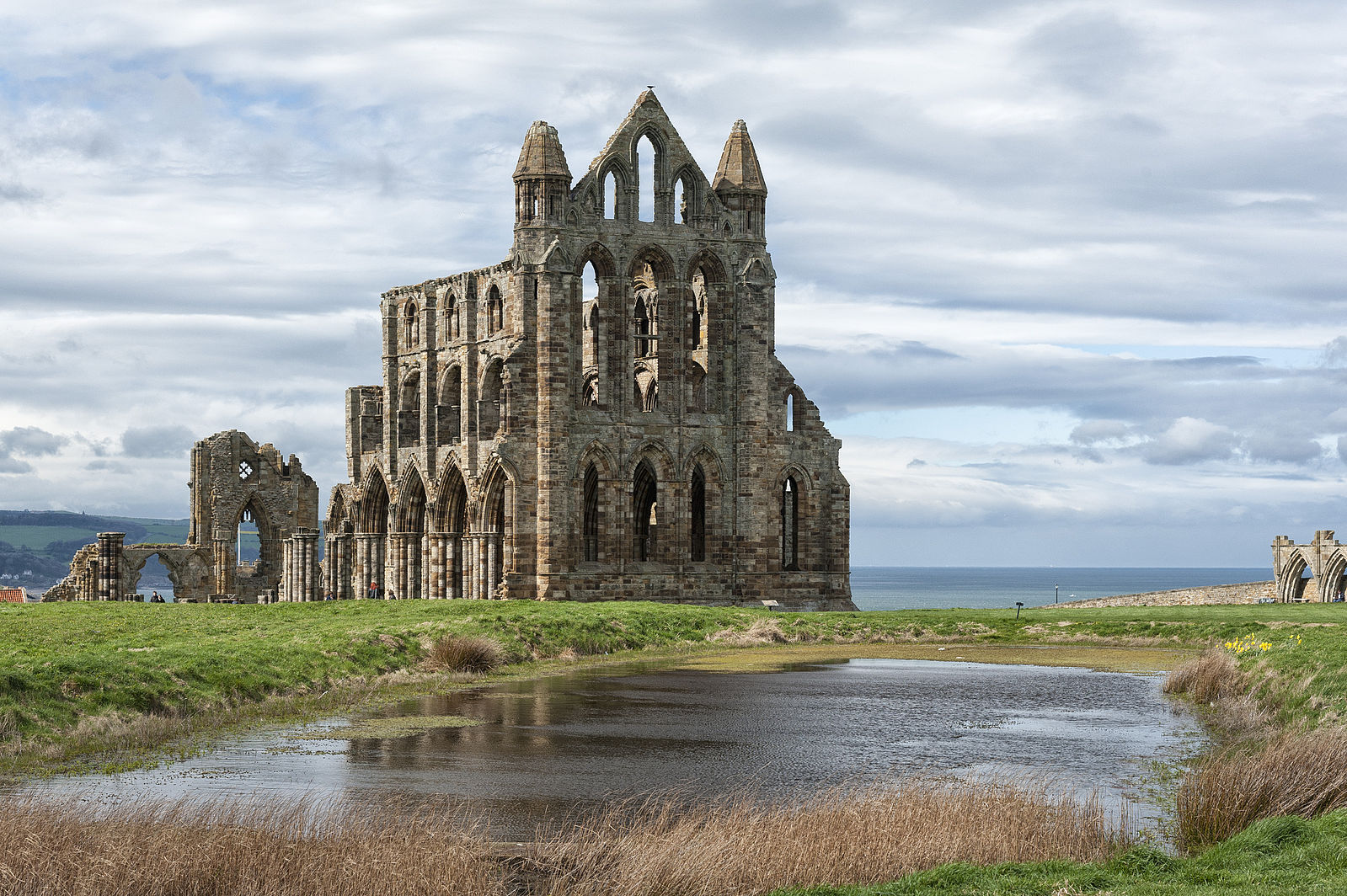
Whitby harbour faces due north and is one of the few places in the country where watching the sunrise and sunset over the sea is possible on the same day. If you’re up for a more convoluted loop , you could certainly start and end your journey here; particularly if travelling in the summer when longer days certainly make it possible.
On your way out or back, look out for dinosaur ‘fossils’ carved into the concrete by local stonemason Darren Yeadon, and, if time allows, take a walk up the spiral staircase of the West Pier Lighthouse.
Robin Hood’s Bay
In the 20 or so miles between Whitby and Scarborough, Robin Hood’s Bay is the only place of any size on the coast. Such is the ruggedness of this coastline that there is not even any road access to the shore anywhere else, and thus this charming village situates itself as a natural conclusion to a tour of the North York coast.
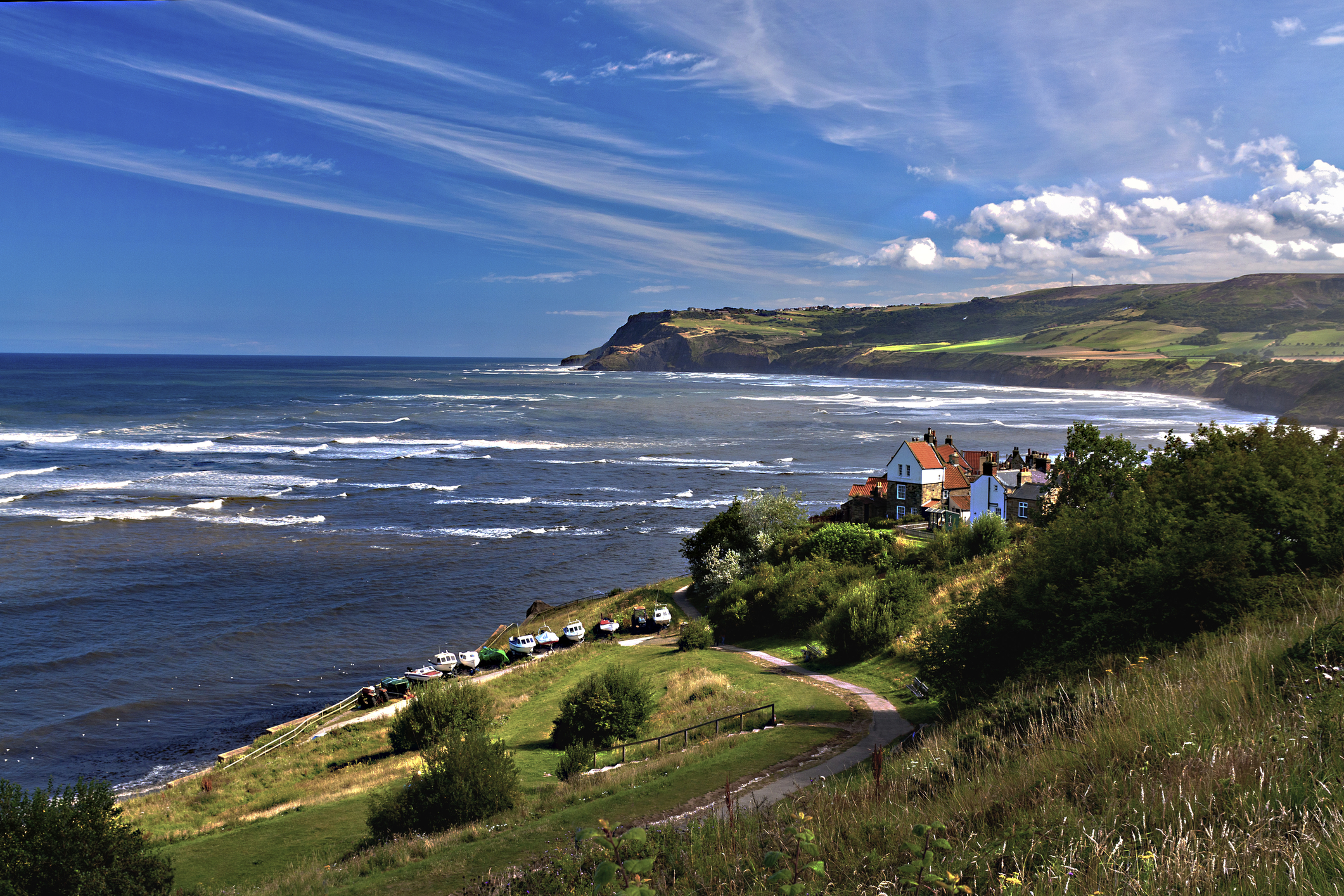
While there’s no evidence Robin Hood himself ever had anything to do with the village, it is certain that there have been outlaws here; in fact, in the 17th century it appears that most of the population were actively involved in smuggling. There were tunnels linking cellars, secret passages and hidey holes for both people and contraband. It is said that a bale of silk could pass from the dock at the bottom of the village to the top, without seeing the light of day.
If you are feeling adventurous it is still possible to scramble up part of this route by following the beck from the beach up into the tunnel a few hundred yards. All you need is a pair of wellies, a torch and a sense of adventure.
More information
Find out more in Mike Bagshaw’s guide:
